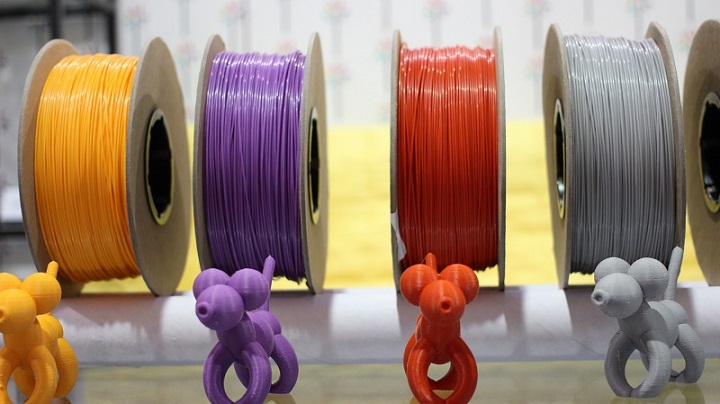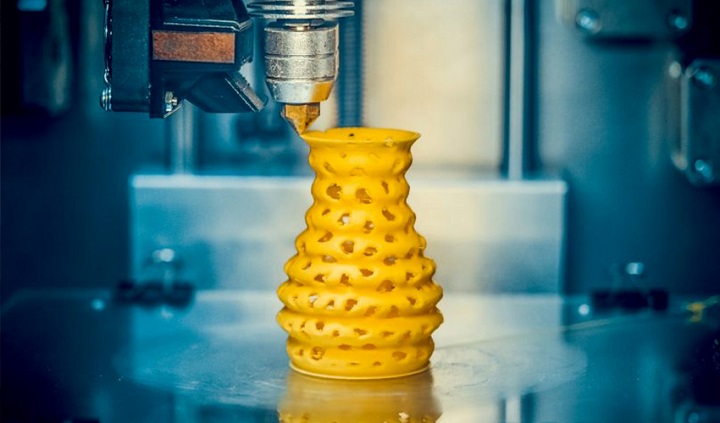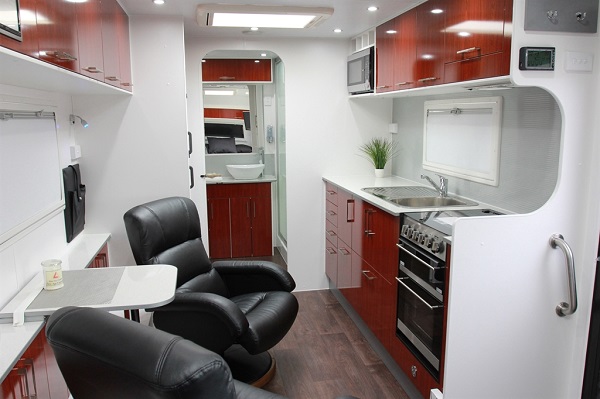Zooming in on All Important Details on 3D Filaments
A rapid prototyping system using photopolymers was the first ever 3D printer, invented in 1981 by Hideo Kodama. It was only three years later that the first ever printing technology was invented, called stereolitography. All throughout the years various types of 3D printing technologies emerged such as SLS, FDM, MJF and much more . In 1999 3D printers saw a huge potential in the medical field as this was the year the first 3D printed human organ was put in a human. The range of applications for 3D printing extended to various different industries which were the precursor for different types of printing technologies and filaments too.

What Are The Different 3D Printer Filaments?
ABS
Acrylonitrile butadiene styrene is a 3D filament that is not easy to use, but it is worth the struggle. ABS is extremely tough which is why people buy 3D printing filament to make items that are being handled everyday especially in high temperature and high stress environments. If you want to make those type of items, you should buy 3D printing filament that lasts no matter what its subjected to and ABS is that filament.
PLA
The most commonly used 3D filament today is polylactic acid known as PLA. Despite not being as strong as ABS due to its ease of use, PLA is the preferred filament by both newcomers and experienced printers. PLA also doesn’t warp as easily as ABS nor does it produce a bad smell when printing with it. This biodegradable thermoplastic is made from renewable resources such as sugar canes and corn starch.

ASA
If you want to replace the flaws of ABS with a more convenient alternative then ASA (acrylonitrile styrene acrylate) is what you should start working with. Once again, this type of filament is sturdy and resistant to heat and physical stress but what’s different is that it can also survive chemical exposure and exposure to the elements. ASA warps less during printing and it doesn’t turn yellow if left exposed to the sun.
PP
Polypropylene is another tough 3D printer filament resistant to chemicals. What makes PP different from both ASA and ABS is that its considerably lighter and more flexible. This food safe filament can be used to make textiles, bank notes, food packaging and much more but it is extremely hard to work with. PP is known to warp excessively and it can lack layer adhesion if optimal conditions aren’t met.
Nylon
This type of synthetic polymer provides durability, strength and flexibility and it is the best filament when it comes to providing all three consistently. Nylon is known as polyamide too which is also less brittle than both PLA and ABS. Nylon has one unique characteristic and that is the ability to add a new colour to the filament either before or after you’ve printed with it. One downside with nylon is that it absorbs moisture relatively easy which is why you need to have it stored in a dry place.
PETG
Like nylon, PETG is also susceptible to moisture absorption. But this PET (polyethylene terephthalate) is glycol-modified which means that it’s less brittle, clearer and easier to print with than its base counterpart, PET. The cons of PETG are that it is sticky during the printing process and although not brittle it can get scratches more easily than ABS.
PC
Polycarbonate is a strong and durable filament which can withstand temperatures up to 110 °C. What makes is stand out is its transparency which makes it useful for making scuba masks, bulletproof glass and other similar items. Although PC looks the same as plexiglass or acrylic, they aren’t that alike, since unlike these materials PC has moderate flexibility. Like nylon, this type of 3D filament is also hygroscopic (abosrbs moisture).
PVA
Like some of the 3D filaments mentioned above PVA (polyvinyl alcohol) is also hygroscopic but depsite that this filament is also water soluble. While it is a bit tricky to print with, PVA works great as a support material in complex dual extrusion printing with overhangs.
HIPS
This filament combines two contrasting features together – elasticity and hardness. High impact polystyrene is a copolymer that contains rubber alongside its polystyrene base. This makes HIPS a good filament for supporting structures and an exceptional material to pair with ABS. HIPS is commonly used to make CD cases and other protective packaging. The downside of HIPS is that if you pair it with a filament other than ABS it can end up damaging it.
Metal
Plastic isn’t the only way you can go about 3D printing. There are metal filaments which can make an item shinier and bulkier. Although these filaments aren’t fully made of metal, they still provide good results. You can find bronze, copper, aluminium brass stainless steel and more to make your item denser.
Wood
Wood 3D filaments also aren’t actually all wood. They are blends that contain PLA too and come in a large variety such as Cedar, Willow, Ebony, Pine and more. While items printed with a wood filament are going to be aesthetically pleasing, they won’t be as strong and flexible as ABS or PLA printed items.

Conductive
PLA is also used to make a conductive 3D printing filament. This type of blend contains conductive carbon particulates which makes it capable of conducting low voltage. This makes conductive PLA the best solution when it comes to making electrical circuits that don’t have high demands. There’s also conductive ABS which allows you to make more durable circuits that are able to power basic sensors and LEDs.






